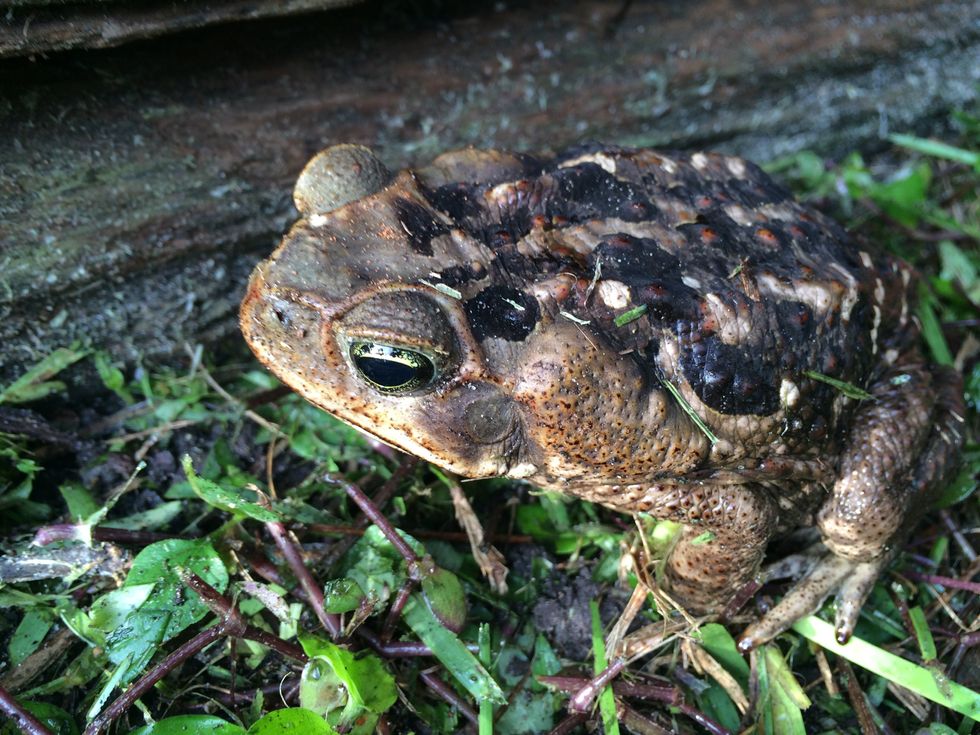Do not let your pet play with a toad. It may be imagined as cute that your dog is curious and wants to interact with other animals, but the cane toad is life-threatening to them.
Cane toads, an invasive species, secrete a milky liquid made of toxins that mainly affect the heart, according to National Geographic. The poison is secreted through glands over the toad's shoulders as a means of defense.
Pets are naturally curious. Your dog may like to go sniffing around the yard or sniffing the bushes during walks. If your dog comes across this huge toad, which can barely hop, your dog may lick the toad meaning it licked a poisonous body.
Some of the first signs of toad poisoning for dogs are drooling, vomiting, panting, and dilation of the pupils, according to Vetted PetCare. While it may not be immediate, your pet may also have a seizure due to the poisoning.
This is all pretty scary, and it should be. As a pet owner, it's vital to understand the dangers to your pet. My family spent a few years with our dog - in Florida, a hot spot for cane toads - without any knowledge of the toad had it not been for watching the news one day.
If your pet gets poisoned, your first reaction should be to try to wash out the mouth as much as you can without pushing any water or toxin to the throat, which would allow the toxin to move throughout the body. Then, immediately take your pet to the nearest emergency vet. This isn't something that can be treated from home, like an ear infection.
Cane toads thrive in warm and humid weather, so they are very active in the southeast, particularly Florida, but they can be seen in other states too. They are also very active in Hawaii.
Toads eat bugs. Aside from humid weather, you can find the toads near pet poop, which attracts bugs and thus, attracts the toads. You should also keep your grass cut to avoid a livable habitat for the toads. This summer, Florida's weather is expected to have more rain than usual.
There are a few ways to identify the cane toad even though you may not crouch over every frog or toad to take a good look at it. A native southern toad will have crests on top of its head, between the top of the eyes, while a cane toad will not have crests, according to the University of Florida Wildlife. Crests look like bumps. The cane toad's skin is "warty" and its eyes seem to be larger and hooded.
Cane toads are native to South America, Central America, Mexico, and the very south of Texas, according to the Nonindigenous Aquatic Species database. They were taken to Australia and Florida among other places to help farmers fight pests. It turns out that the cane toad can not help, and is now just a dangerous animal to have near your pets.
Stay safe and aware!























